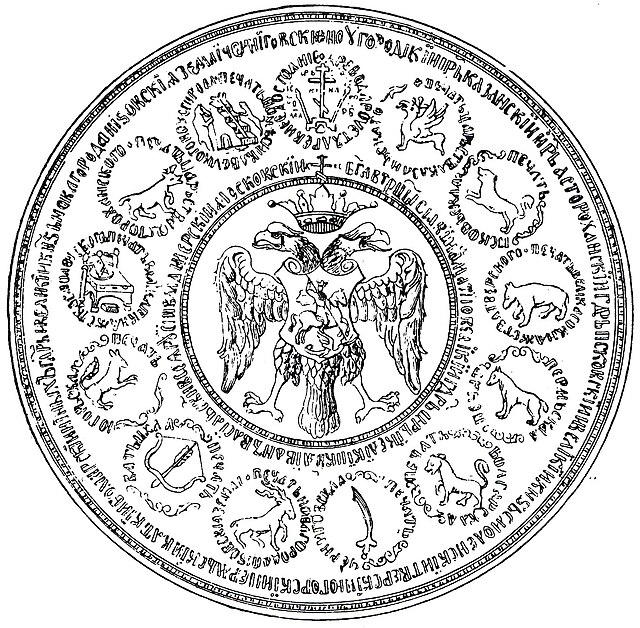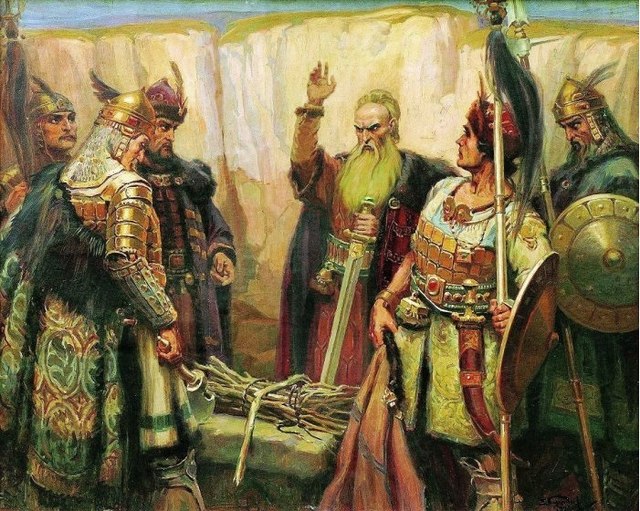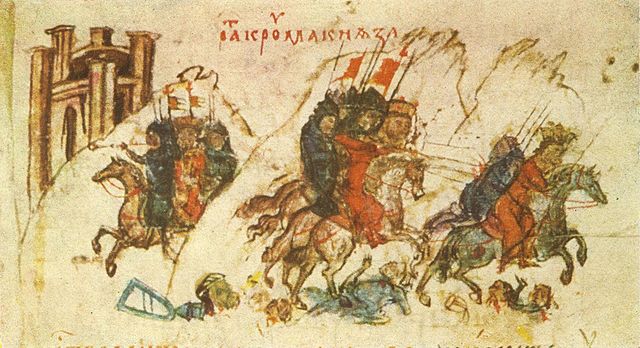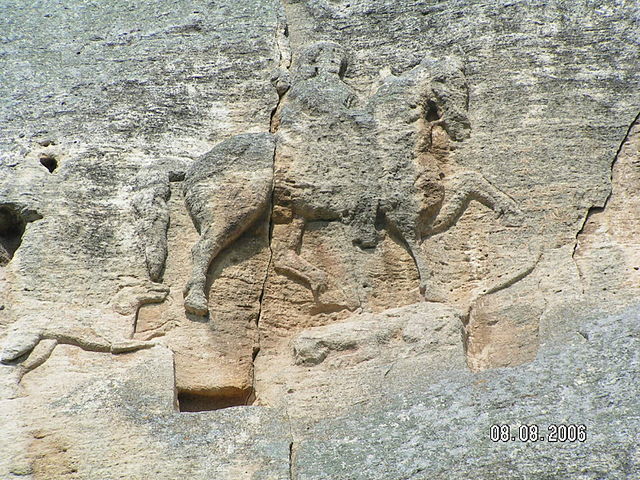Volga Bulgaria or Volga–Kama Bulgaria was a historical Bulgar state that existed between the 9th and 13th centuries around the confluence of the Volga and Kama River, in what is now European Russia. Volga Bulgaria was a multi-ethnic state with large numbers of Bulgars, Finno-Ugrians, Varangians and East Slavs. Its strategic position allowed it to create a local trade monopoly with Norse, Cumans, and Pannonian Avars.
Volga Bulgaria
Coat of arms of the Volga Bulgars on the great state seal of Ivan IV Grozny
Coat of arms of the Volga Bulgars on the great state seal of Ivan IV Grozny
Coat of Arms of Bulgaria 1857
The Bulgars were Turkic semi-nomadic warrior tribes that flourished in the Pontic–Caspian steppe and the Volga region during the 5th-7th century. They became known as nomadic equestrians in the Volga-Ural region, but some researchers believe that their ethnic roots can be traced to Central Asia.
Bulgars led by Khan Krum pursue the Byzantines at the Battle of Versinikia (813)
A 1926 painting depicting Kubrat (in center), ruler of Great Bulgaria.
Khan Krum defeats the Byzantine Emperor Nicephorus I in the battle of the Varbitsa Pass, Manasses Chronicle
The Madara Rider, an example of Bulgar art in Bulgaria, dated to the beginning of the 8th century








